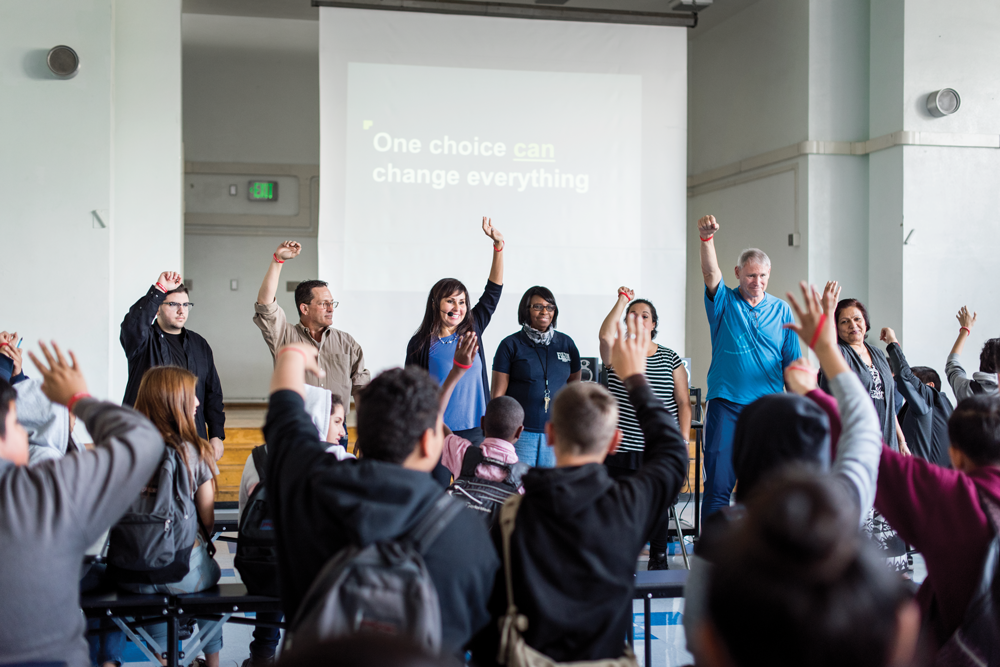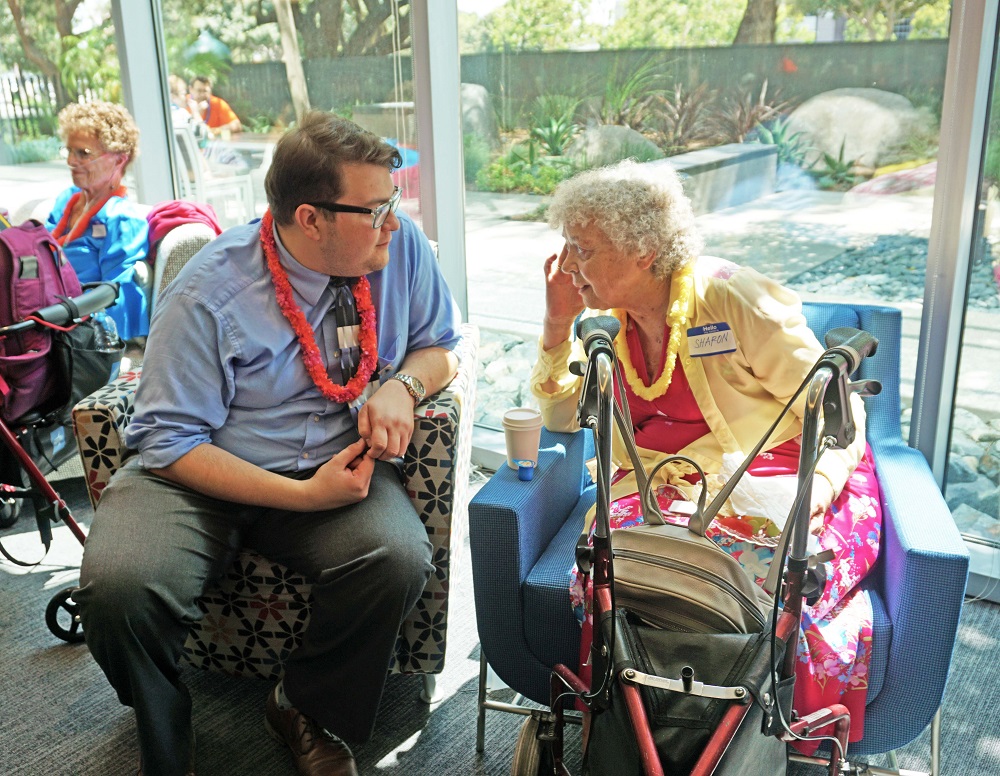For years, health policy types have been telling us that where we’re born, grow up and live impacts our health just as much as our DNA. Those factors are neatly encapsulated by the term “social determinants of health”: all the things that may not immediately prompt you to go to the doctor, but which are fundamental to good health, such as socioeconomic status, working conditions, transportation and safe housing.
Recognition of their importance has grown as organizations such as Kaiser Permanente, Humana and Intermountain Healthcare have launched initiatives to address these and other determinants. But experts say the biggest overall driver of this trend is the continuing shift to value-based care.
Integrated delivery networks (IDNs) that assume full risk for their patient populations realize the need to deliver care where it’s most effective — which is to say, at the local level. Similarly, health plans are starting to see that by offering non-clinical services, such as non-emergency medical rides, nutritious meals or counseling, they can help improve outcomes.
“We’re fully at-risk for all the healthcare expenditure that our patients experience,” explains Dr. Sachin Jain, president and CEO of CareMore, an IDN which is a unit of Anthem. “So we are really compelled to make investments where it makes a difference.”
CareMore provides post-discharge meals for diabetic patients, and partners with Lyft to offer patients rides to medical appointments. As part of its Togetherness program — probably the largest of its kind — about 1,000 seniors receive a combination of phone calls and home visits by a social worker or volunteer and access to group exercise and classes, all meant to reduce isolation.
“We think that, over time, we will be able to lower overall costs of care for our patients because investing upstream translates into better care in the long run,” Jain adds.
Place matters in health
Social determinants are truly the root causes behind various kinds of health inequity and often account for differences in lifespan.
As Jane Sarasohn-Kahn put it succinctly in her 2019 book HealthConsuming, “Place matters for a person’s health.” Indeed, there is a 15-year difference in longevity between the richest and poorest Americans, and it’s attributable to where you live, she noted.
Yet despite that evidence base (and that “social determinants of health” has been a universally accepted term since the early 1990s), efforts to address the situation remain fragmented. To that end, not all stakeholders are on board. The life sciences industry, for one, has not embraced the nascent SDOH trend. But an announcement this past summer by CVS Health may prompt biopharma to get on board, however belatedly — and it wasn’t the expansion of its Amazon-like CarePass program, meant to compete with Prime.
CVS Health, which has fully absorbed Aetna into its business, launched a platform meant to address social determinants. The effort is one plank of a $100 million commitment, dubbed the Building Healthier Communities initiative, funded by both CVS Health and the Aetna Foundation.
Doctors can make that electronic referral to a human or social service organization the same way that they would make that referral to a clinical provider.
Taylor Justice, Unite Us
As part of it, community members identify the social needs that are unique to them. The platform then “allows them to be connected to the social services that best fits those needs,” says Dr. Garth Graham, VP, community health and impact, CVS Health, and president, Aetna Foundation.
“Rather than trying to, in a monolithic sense, define what one particular community might need, what we did was pick a partner who has the ability to aggregate social services across a variety of different services to meet the needs of the community,” Graham explains. That partner is Unite Us, whose digital infrastructure replaces a process whereby a discharge planner would hand someone a printed brochure and hope the person follows up on his own.
Healthcare providers in CVS Health’s retail clinics will be able to make electronic referrals for such non-clinical services as rides and meals, and do so within their clinical workflow. “Doctors can make that electronic referral to a human or social service organization the same way that they would make that referral to a clinical provider,” says Taylor Justice, cofounder and president of Unite Us.
He adds that such referrals take place right in a patient’s electronic health record (EHR). Not only can providers now make such referrals, they can also see if that community-based organization accepts that referral, as well as whether services have been rendered, all within the EHR.
SDOH referral platforms such as Unite Us, and to a certain extent competitors including Healthify, Signify Community (formerly TAV Health) and Solera, represent the most mature segment of the nascent SDOH industry, according to a 2018 report from strategy firm Patchwise Labs. The social platform sector is growing at a CAGR of 23%-25% to an estimated size of $265 million by 2023, per the report.

The social platform segment
By providing this backend “plumbing” to health systems and plans and state governments that want to move care out into the community, these firms are enabling the SDOH revolution. They’re also providing the necessary conditions for non-clinical referrals to multiply.
Healthify reports more than 200,000 interactions a month for people in need on its platform, while Signify Community says it has tallied about 35 million SDOH-related activities, ranging from assessments and need identification to referrals and services provided.
More community-based services have the ability to tap into this digital supply chain, from churches and barbershops to educators and food pantries. It’s already been a boon for ride-sharing startups such as Uber and Lyft, with whom insurers are increasingly partnering directly or indirectly, and powered a new generation of brokers specializing in non-emergency rides, such as Veyo, Circulation (now merged with LogistiCare) and Kaizen Health. Unite Us is also powering a statewide SDOH program for all of North Carolina as well as Kaiser Permanente’s Thrive Local technology and care coordination platform, announced in May to support its 12.3 million members and the 68 million people in the communities Kaiser Permanente serves.
The CVS Health deal brings the SDOH trend to the mainstream market in a whole new way. In addition to its nearly 9,700 drug stores, CVS Health runs more than 1,100 MinuteClinic walk-in clinics as well as a growing number of HealthHUB stores across the country. Of perhaps even larger significance is CVS Health’s unique infrastructure of PBM, provider and payer, which may enable it to accelerate the shift to value-based care by steering Aetna members to the most cost-effective sites of care, including those in CVS’ own provider network.
EHR giant Epic is also in the process of releasing new tools to help providers collect socioeconomic information, according to media reports. “That’s really a huge step forward after we’ve known for a decade that social determinants have an outsized impact on health outcomes,” said Tanya Shah, assistant VP for delivery system reform at The Commonwealth Fund, at a meeting on health system innovation which took place at Mount Sinai’s Icahn School of Medicine last September. “We’re finally getting our system to acknowledge that.”
But whether doctors will use such tools is unknown. Naveen Rao, founder and managing partner at Patchwise Labs, has other questions about the new social platform as well. Given that the U.S. spends twice as much on healthcare than on social services, he points out, the country seems to have an underfunded safety net.
“I don’t think CVS is going to become the safety net, but they’re going to sort of fortify it a little bit,” Rao explains. “If they’re putting this into their stores and they’re opening up MinuteClinics in under-served communities, then by default they’re going to have to take on a little bit of that role as well.”
However, those clinics are not necessarily located in the areas where people can most benefit from social services, nor may they be geared to accept non-Aetna members. “This is not going to be a silver bullet. It’s the tip of the spear,” he continues. “We’re going to see a lot of learnings come out of what they do.”
A social strategy for every drug?
If SDOH platforms are making it easier for doctors to make referrals for social services right in their workflow (and right alongside the prescribing of therapeutics), that’s an opportunity for biopharma. Yet if drugmakers have started to articulate a well-defined strategy to address SDOH, they’ve done so under the radar.
That situation is due to change. Jain, previously a chief medical and innovation officer at Merck, believes every brand needs to take a precision approach to addressing social determinants.
“Biopharma has a huge opportunity and imperative. You can produce medicines that will change lives, but if you don’t have the living conditions to support effective use of those medicines, we’re missing an opportunity to improve human health,” he says.
SDOH isn’t the latest medical breakthrough or the brightest object in the marketing tool box. After all, worrying about life conditions among the people taking its medicines isn’t within the traditional bailiwick of most biopharma companies. But industry may need to expand its scope.
“We used to say every medicine should have a digital strategy. Well, every medicine needs a social strategy. There’s a huge interface between how patients live their life and how effective those medicines are,” Jain says. “I’m looking for one biopharma company to really step up and go beyond the traditional role to think more holistically about how medicines are consumed, the overall context of a patient’s life and, frankly, to live up to the words in their mission statement to really take care of people and communities.”
Sarasohn-Kahn underscores the point, writing that, “Using the shiniest, newest digital health technologies won’t in and of themselves mitigate the risk factors that shape our health before and at birth, during childhood and throughout life.”
We used to say every medicine should have a digital strategy. Well, every medicine needs a social strategy.
Dr. Sachin Jain, CareMore
Those technologies need to be applied to the patients who are most likely to benefit from them, or else we won’t see a treatment effect. “We often see people’s touchpoints with the healthcare system as their most important moments, but we’ve always had the equation wrong,” Jain notes. “Their most important moments are the ones that happen outside of the healthcare system. The question for people interested in creating change is, ‘How do we actually touch and influence patients when they’re not interfacing with the healthcare delivery system?’”
What does pharma’s commitment to social care presently look like? Laurie Myers, global health literacy director at Merck, stresses the role that health literacy plays in the equation.
Health literacy refers to the degree to which individuals have the capacity to obtain, process and understand basic health information and services needed to make appropriate health decisions. It’s one of the most important of the social determinants of health and is, in fact, a stronger predictor of a person’s health than age, income, employment status, education level or race, Myers says. “When patients are armed with this knowledge, we truly optimize the benefits of our medical innovation.”
Myers sees to it that health-literacy principles are applied to as many of Merck’s brand communications as possible, with a particular emphasis on new molecules. “The greatest opportunity to apply health literacy principles is when you do it early in clinical development,” she notes.
That includes clear language and other design tenets, such as appropriate amounts of white space and formatting. Under her watch, Merck has received FDA approval for five health-literate patient labels. She has also endeavored to improve the firm’s informed consent documents and diversity in its clinical trials, and trained hundreds of her colleagues, among them the company’s scientists, in health literacy.
Myers stresses that numerous other people across the drug industry are working on health literacy, although Merck is one of only two drugmakers that have a fully dedicated resource (Eli Lilly is the other). Both are members of the National Academies of Sciences health literacy roundtable, for which they’re working together on a study about pharma’s role.
Why aren’t more companies showing a similar level of commitment? Myers cites a couple of barriers. Aside from a lack of understanding about the importance of health literacy, a big one is legal and regulatory concerns. “People perceive, I believe often mistakenly, that because of FDA regulations, we can’t communicate in a health-literate way. And that’s not true,” she says.
That said, her work at Merck is more collaborative than competitive. “Health literacy is not something that we view as a ‘competitive advantage,’” Myers continues. “It’s something that’s the right thing to do for patients. We are very committed to sharing the things we’ve learned publicly.”

Barriers and catalysts
To be fair, even beyond life sciences, there isn’t a unified commitment to focus on the social determinants. One reason is that, in general, current investments in bolstering primary care are quite low.
Fragmentation in the health system is also to blame. When it comes to assessing and managing social and behavioral health needs, Shah adds that “these are right now functioning in silos. Yes, health systems are coordinating with [community based] agencies outside the clinical team, but it’s still not far enough along.”
Another barrier involves the dialogue around SDOH. To hear Jain tell it, the rhetoric is not nuanced enough. Take housing, for instance. It’s axiomatic that not having stable housing is a predictor of becoming a so-called high-cost/high-need patient.
“We need to give that intervention only to the patients who would most benefit and for whom there’s real value for it, but a lot of the dialogue gets more sloppy. People start talking about more broad distribution of these things,” Jain explains.
Then again, this could be an opportune time for biopharma to up its participation.
Being able to identify those needs as you put a pill in someone’s hand — I think of as low-hanging fruit.
Naveen Rao, Patchwise Labs
They might start to think about it in the context of clinical trial recruitment. “We know that socioeconomic status really impacts representation in enrollment for who is actually getting into these trials,” Rao says. “But then that impacts a lot of their access and strategies to get to the market.”
Rao’s second idea for a pharma industry SDOH catalyst is a beyond-the-pill redux of sorts. “What is the version of that with social determinants, where you can bundle drugs with some lightweight services, whether it’s a screening, a referral or some financial assistance?” Rao asks. “Being able to identify those needs as you put a pill in someone’s hand — I think of as low-hanging fruit. And pharma’s going to be a little bit more involved as the rest of the market really starts to pick up and run with social determinants as part of their population health strategy.”
Jain suggests a direct-to-consumer engagement model. “You can literally know every single patient who is taking your medicines, but what is the relationship that the companies have with the patients around those medicines, how they’re being used?”
This is a concept, he says, that he tried to kick off when he worked on the biopharma side of the fence. Alas, he ran into what he calls risk-averse regulatory models.
“We need to start thinking differently and taking a proactive approach to regulators around how can we change the deployment model of these medicines,” Jain explains. “The lines need to start to blur more between those who deliver care, those who develop medicines, and those who pay for care. We need to start thinking more holistically just about our patients, who they are and what they need.”
From the September 01, 2019 Issue of MM+M - Medical Marketing and Media







